Armand Désire GAUTIER (1825-1894) La folle de la Salpêtrière Paper mounted on canvas. Annotated lower right La folle de la Salpêtrière. 26 x 20.6 cm Armand Gautier was Gustave Courbet's most loyal friend, with whom he shared a quest for realism and an interest in modern, societal subjects. In Paris in the early 1850s, he befriended his fellow Lille medical student, Paul Gachet. Gachet, who was to become a patron of the Impressionists and welcomed Cézanne and van Gogh to his home in Auvers-sur-Oise, was an intern at the Salpêtrière in 1854 in the department of Dr. Falret, who granted Gautier "?permission to carry out numerous studies, such as Une Gâteuse, Une Mégalomane, Une princesse à la Salpêtrière?" (exhibition catalog Armand Gautier 1825-1894. Une amitié à la Courbet, Ornans, Musée Courbet, 2004, p. 29). These studies paved the way for a large-format work, Les Folles de la Salpêtrière, which was rejected at the Salon of 1854; lost, its composition is known from an engraving. Founded in 1656 as a hospice for homeless women, the Salpêtrière hospital in Paris underwent significant changes over the centuries. In the 18th century, the visionary physician Philippe Pinel (1745-1826) instituted major reforms in the establishment's approach to treating mental disorders, such as the abolition of patient shackling. Then, in the 19th century, the renowned Jean-Martin Charcot (1825-1893) took over the reins of the neurology department, devoting himself to the study of hysteria in women. The years 1870-1920 were marked by Charcot's extensive research into hysteria, frequently involving women dubbed the "madwomen of the Salpêtrière". This period was marked by significant advances in the understanding of mental health, but it was also punctuated by controversial medical practices and the stigma associated with mental disorders. These women were regularly exhibited in clinical demonstrations, sometimes in front of an audience, with the aim of displaying the symptoms of hysteria. At the end of the 19th century, a notorious ball was held annually at the hospital, known as the "bal des folles". The event attracted numerous celebrities, attracting the attention of the Parisian press.
To see the original version, click here.
Armand Désire GAUTIER (1825-1894) La folle de la Salpêtrière Paper mounted on canvas. Annotated lower right La folle de la Salpêtrière. 26 x 20.6 cm Armand Gautier was Gustave Courbet's most loyal friend, with whom he shared a quest for realism and an interest in modern, societal subjects. In Paris in the early 1850s, he befriended his fellow Lille medical student, Paul Gachet. Gachet, who was to become a patron of the Impressionists and welcomed Cézanne and van Gogh to his home in Auvers-sur-Oise, was an intern at the Salpêtrière in 1854 in the department of Dr. Falret, who granted Gautier "?permission to carry out numerous studies, such as Une Gâteuse, Une Mégalomane, Une princesse à la Salpêtrière?" (exhibition catalog Armand Gautier 1825-1894. Une amitié à la Courbet, Ornans, Musée Courbet, 2004, p. 29). These studies paved the way for a large-format work, Les Folles de la Salpêtrière, which was rejected at the Salon of 1854; lost, its composition is known from an engraving. Founded in 1656 as a hospice for homeless women, the Salpêtrière hospital in Paris underwent significant changes over the centuries. In the 18th century, the visionary physician Philippe Pinel (1745-1826) instituted major reforms in the establishment's approach to treating mental disorders, such as the abolition of patient shackling. Then, in the 19th century, the renowned Jean-Martin Charcot (1825-1893) took over the reins of the neurology department, devoting himself to the study of hysteria in women. The years 1870-1920 were marked by Charcot's extensive research into hysteria, frequently involving women dubbed the "madwomen of the Salpêtrière". This period was marked by significant advances in the understanding of mental health, but it was also punctuated by controversial medical practices and the stigma associated with mental disorders. These women were regularly exhibited in clinical demonstrations, sometimes in front of an audience, with the aim of displaying the symptoms of hysteria. At the end of the 19th century, a notorious ball was held annually at the hospital, known as the "bal des folles". The event attracted numerous celebrities, attracting the attention of the Parisian press.
La vente se fera au comptant. Les acquéreurs paieront en sus de l’adjudication 30 % TTC. En cas de paiement par chèque par l’adjudicataire, le transfert de propriété n’aura lieu qu’après encaissement du chèque. Tous les frais bancaires sont à la charge de l’acheteur. Des frais de magasinage et de manutention seront facturés en cas de retard de paiement. L’adjudicataire le plus offrant et dernier enchérisseur, aura l’obligation de payer comptant et de remettre ses nom et adresse. La société de vente étant par son statut un mandataire agissant pour le compte du vendeur, c’est le vendeur de l’objet taxé à la T.V.A. qui est seul responsable de la déclaration du paiement de la T.V.A. auprès des Autorités fiscales compétentes. Dès l’adjudication prononcée, les objets sont sous l’entière responsabilité de l’adjudicataire. L’ordre du catalogue est suivi ; toutefois, la société de vente et l’expert se réservent le droit de réunir ou de diviser les lots. Les renseignements concernant les lots sont donnés à titre indicatif. Des rapports de condition des lots sont disponibles sur demande. Aucune réclamation ne sera admise une fois l’adjudication prononcée. La société de vente et l’expert se chargent d’exécuter gracieusement les ordres d’achat qui leur seront confiés. L’opérateur de vente volontaire est adhérent au Registre central de prévention des impayés des Commissaires-priseurs auprès duquel les incidents de paiement sont susceptibles d’inscription. Les droits d’accès, de rectification et d’opposition pour motif légitime sont à exercer par le débiteur concerné auprès du Symev 15 rue Freycinet 75016 Paris. *Les lots marqués d’un astérisque sont soumis à l’obtention d’un certificat CITES pour l’exportation. Retrait des lots de petite taille : Daguerre, 5 bis, rue du Cirque 75008 Paris, sur rendez-vous au +33 (0)1 45 63 02 60 14 jours gratuits puis 5€ /jour/ lot. Retrait des lots d’un volume important: Magasinage Drouot, 6bis rue Rossini 75009 Paris, sur rendez-vous au +33 (0)1 48 00 20 18 ou [email protected] A partir du 2e jour, frais de stockage TTC par lot : 1 €/5 €/ 10 €/15 €/20 €, selon la nature du lot
01 45 63 02 60
Exhibition of lots
La vente se fera au comptant. Les acquéreurs paieront en sus de l’adjudication 30 % TTC. En cas de paiement par chèque par l’adjudicataire, le transfert de propriété n’aura lieu qu’après encaissement du chèque. Tous les frais bancaires sont à la charge de l’acheteur. Des frais de magasinage et de manutention seront facturés en cas de retard de paiement. L’adjudicataire le plus offrant et dernier enchérisseur, aura l’obligation de payer comptant et de remettre ses nom et adresse. La société de vente étant par son statut un mandataire agissant pour le compte du vendeur, c’est le vendeur de l’objet taxé à la T.V.A. qui est seul responsable de la déclaration du paiement de la T.V.A. auprès des Autorités fiscales compétentes. Dès l’adjudication prononcée, les objets sont sous l’entière responsabilité de l’adjudicataire. L’ordre du catalogue est suivi ; toutefois, la société de vente et l’expert se réservent le droit de réunir ou de diviser les lots. Les renseignements concernant les lots sont donnés à titre indicatif. Des rapports de condition des lots sont disponibles sur demande. Aucune réclamation ne sera admise une fois l’adjudication prononcée. La société de vente et l’expert se chargent d’exécuter gracieusement les ordres d’achat qui leur seront confiés. L’opérateur de vente volontaire est adhérent au Registre central de prévention des impayés des Commissaires-priseurs auprès duquel les incidents de paiement sont susceptibles d’inscription. Les droits d’accès, de rectification et d’opposition pour motif légitime sont à exercer par le débiteur concerné auprès du Symev 15 rue Freycinet 75016 Paris. *Les lots marqués d’un astérisque sont soumis à l’obtention d’un certificat CITES pour l’exportation. Retrait des lots de petite taille : Daguerre, 5 bis, rue du Cirque 75008 Paris, sur rendez-vous au +33 (0)1 45 63 02 60 14 jours gratuits puis 5€ /jour/ lot. Retrait des lots d’un volume important: Magasinage Drouot, 6bis rue Rossini 75009 Paris, sur rendez-vous au +33 (0)1 48 00 20 18 ou [email protected] A partir du 2e jour, frais de stockage TTC par lot : 1 €/5 €/ 10 €/15 €/20 €, selon la nature du lot
18th and 19th century paintings and drawings from the estate of a collector.
Works by Gérôme, Sérusier, Mucha, Lacoste, de Feure, Devambez, Abbema, Osbert, Desvallières, Stevens, Desgoffes, Frechon, etc.
EXHIBITIONS :
Wednesday May 29 -11am to 6pm
Thursday May 30th - 11am to 8pm
Friday May 31st - 11am to 12pm
SALE :
Friday May 31st - 2pm
CONTACT :
Romain Nouel
The story of this collection is unknown to us. For us, it begins with a chance discovery, during a routine estate inventory meeting; that of a man we know nothing about, except that he was at one time an antiquarian.
of a man about whom we know nothing except that he was, at one time in his life, an antiques dealer.
In the Porte Dauphine district, this opaque, cluttered apartment gradually revealed its contents, revealing to us what we're all looking for:
abundance and taste. Here, almost 800 paintings and some 20,000 sheets of paper (drawings, prints, photos) accumulated, sometimes anarchically.
We know almost nothing about this unmapped collection, this collector unknown to the leading experts. In the light of this accumulation, we can see
the character of a solitary man, an art history buff, a tireless defender of the Artist, whether painter, draughtsman, sculptor or photographer. We'd like to
to understand, to know more, to interpret what drove this man to accumulate so many paintings and drawings, often without exhibiting them. We can only make
can only speculate.
The dispersal of this collection over nearly seven sales reflects this quest and mystery. They give us a shadowy glimpse of the man who was
passionate about art and discovery. It also reveals that this aggregation, the quest of a lifetime, was not in vain: the entirety of his collection, now revealed, will be sold for the benefit of the Institut Pas-
the Pasteur Institute.
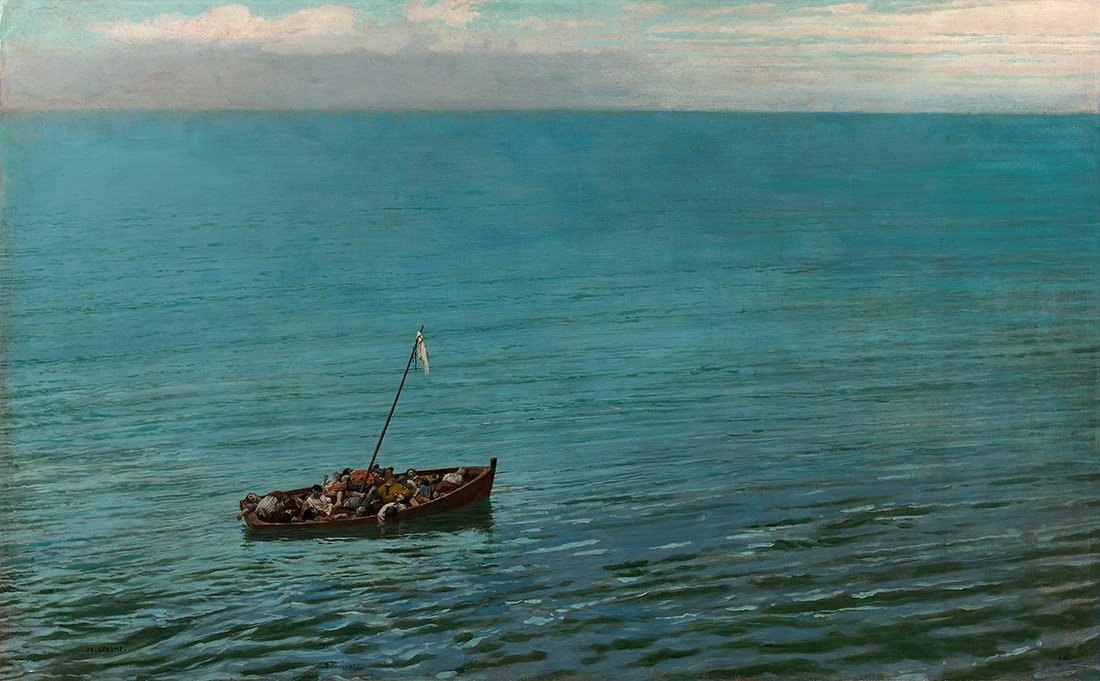
Jean-Léon Gérôme (Vesoul, 1824 - Paris, 1904)
The shipwreck
Canvas
70.4 x 106.3 cm
Exhibition: Cercle de l'Union artistique, 5 rue Boissy d'Anglas, no. 44 (owned by the artist)
Bibliography: Arsène Alexandre, article in Le Figaro, section, la vie artistique, Monday, February 4, 1901: "On peut assimiler à un paysage la marine avec
assimilate to a landscape the marine with a shipwrecked boat exhibited by M. Gérôme. There is some analogy,
for the subject, but a difference among other things for the setting on canvas with Delacroix's moving masterpiece in the Louvre.
Delacroix in the Louvre."
Estimate: €80,000/120,000
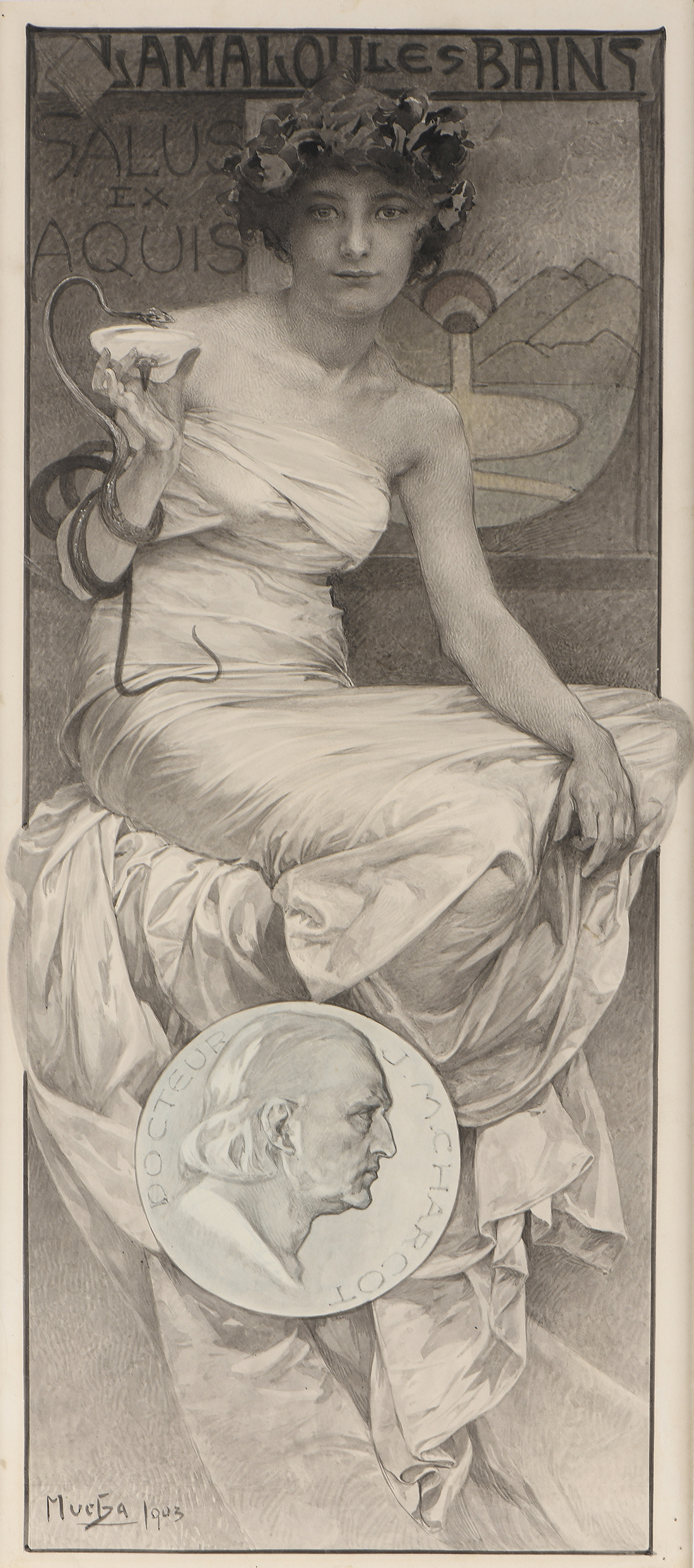
Alfonse MUCHA (1860-1939)
Lamalou-les-Bains, Hommage au docteur Charcot, 1903
Ink, wash and pencil, signed and dated lower left
55.5 x 25 cm
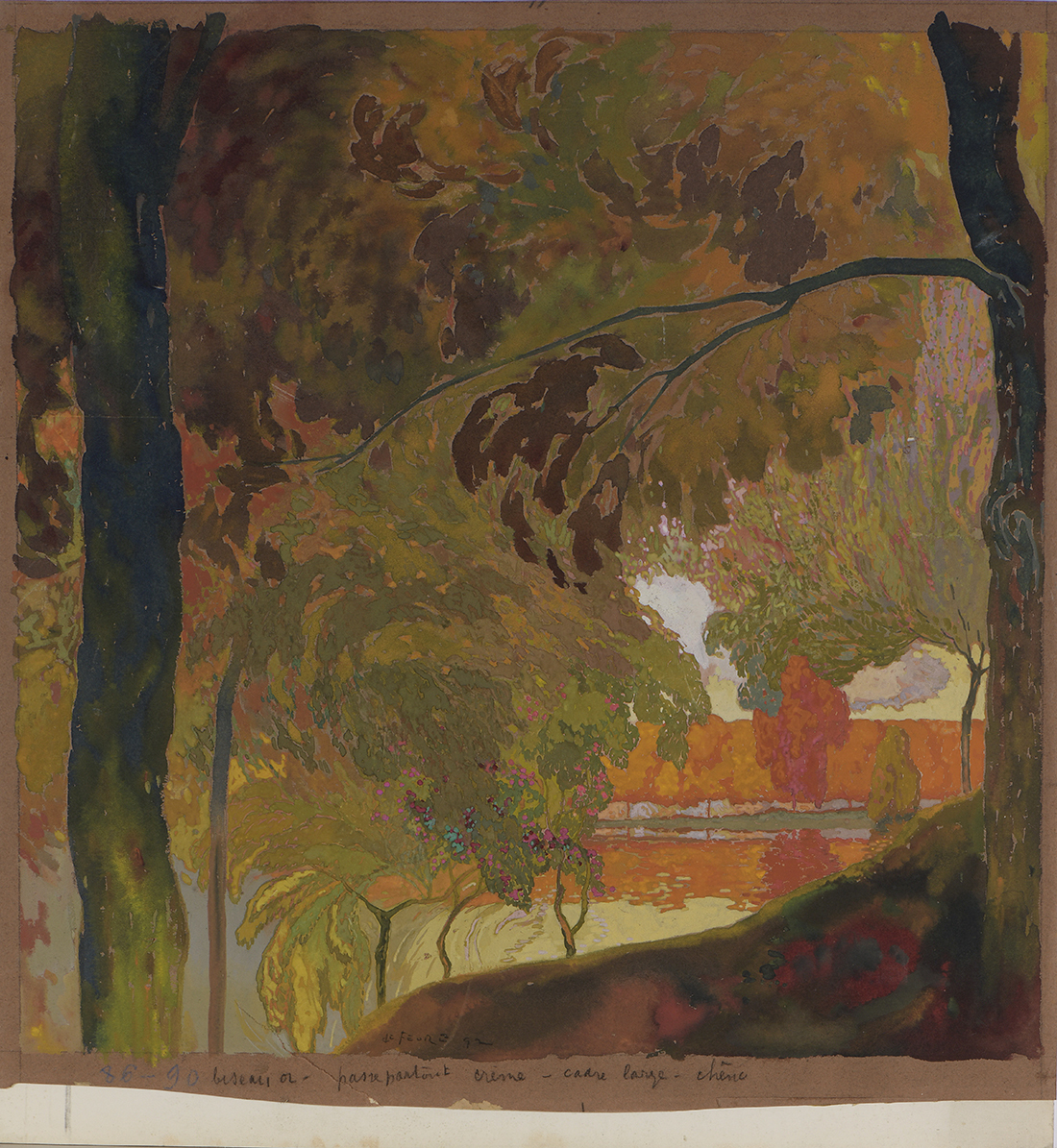
Georges de FEURE (1868-1943)
Landscape, 92
Gouache
66.5 x 65 cm
Estimate: €6,000/8,000
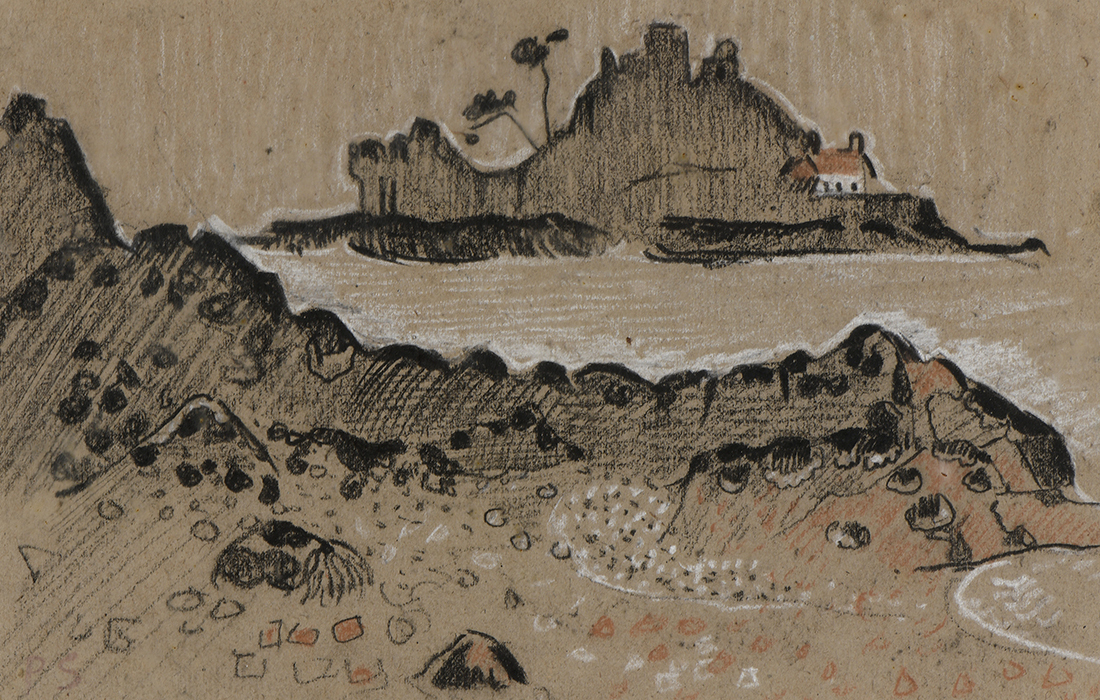
Paul SERUSIER (1864-1927)
Customs island, entrance to the Trieux river
Charcoal and pencil with studio stamp
15 x 23 cm
Estimate: €5,000/6,000
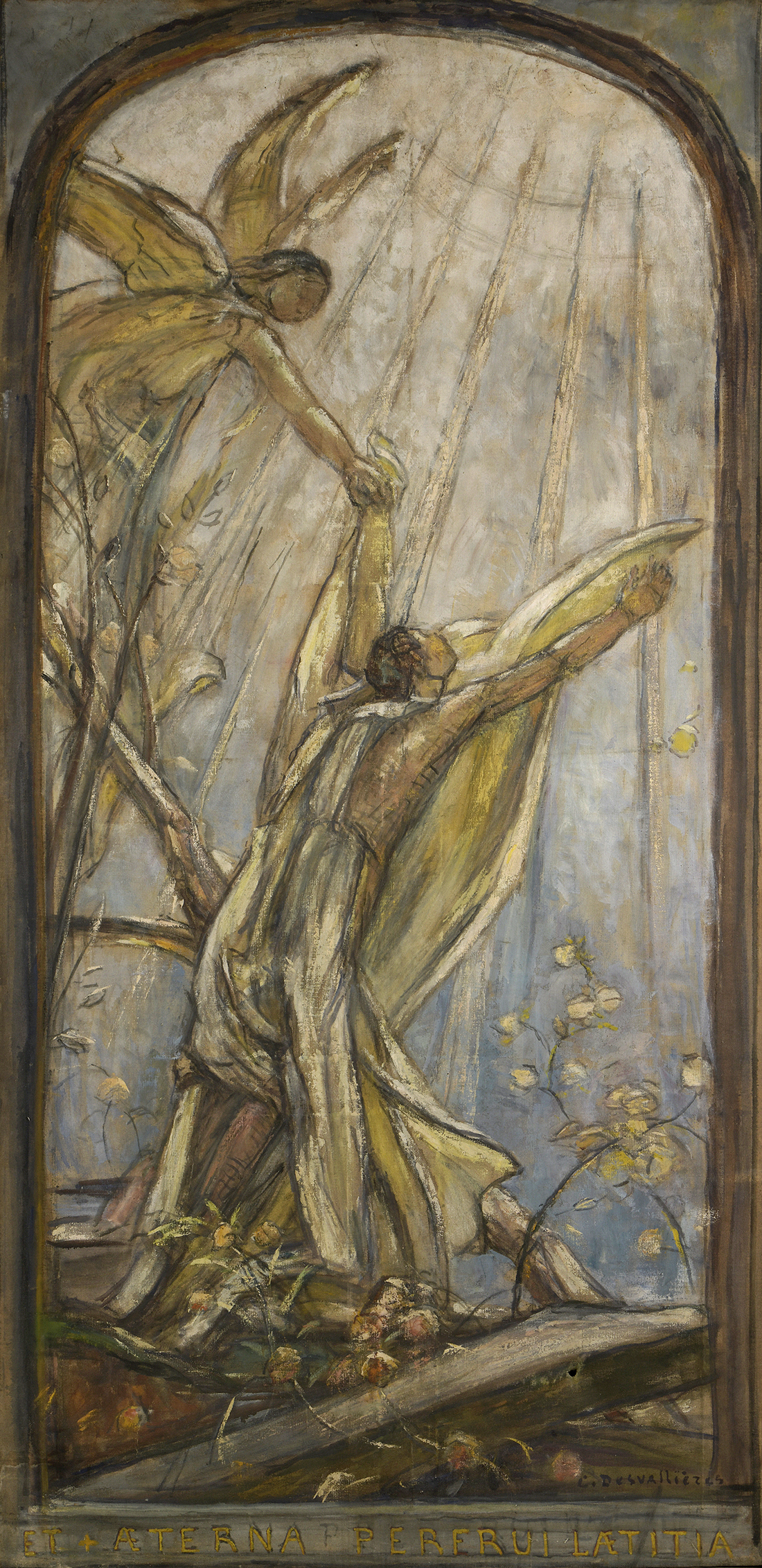
George DESVALLIERES (1861-1950)
Resurrection of the Dead circa 1946
Tempera on canvas signed lower right
175 x 84 cm
Bibliography:
- "George Desvallières, Catalogue raisonné de l'œuvre complet CR 1447- 2675" Catherine Ambroselli de Bayser,
Somogy édition d'art, Paris, 2015, reproduced and described under n°2535, P. 670
Estimate: €4,000/5,000
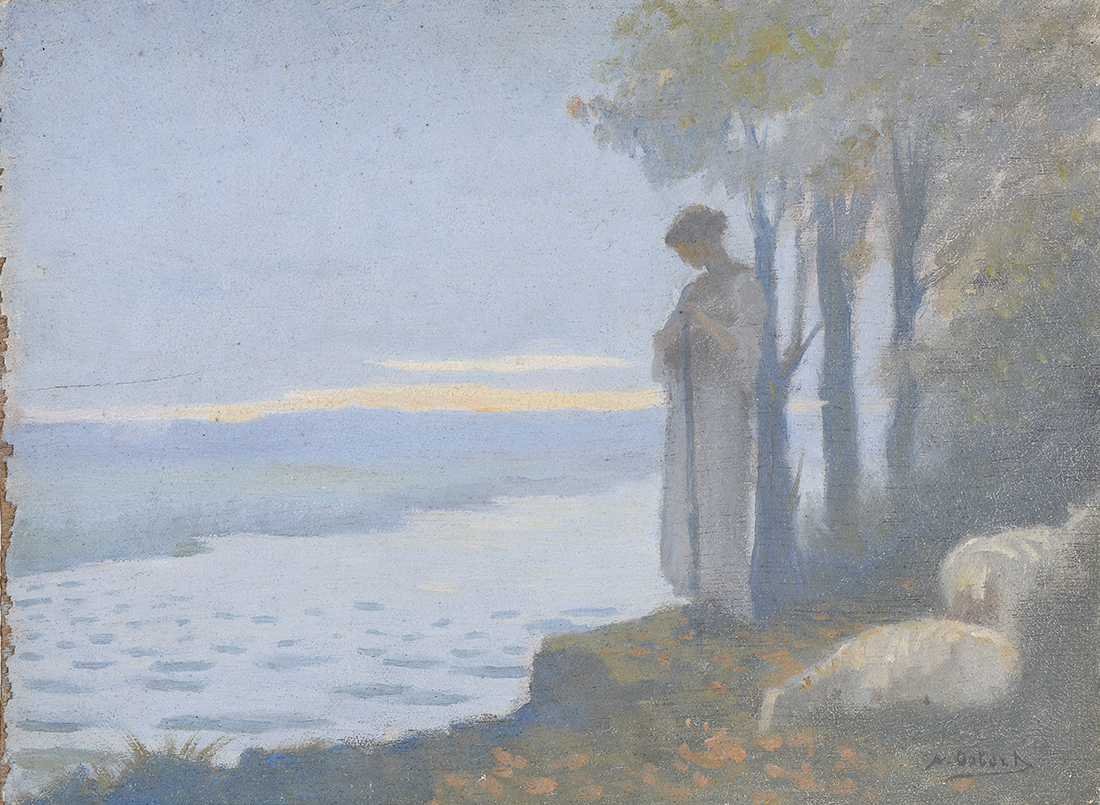
Alphonse OSBERT (1857-1939)
Young shepherdess, evening, 1935
Oil on panel signed lower right, titled, dated, countersigned and bears no. 1137 on the back
21 x 28 cm
Estimate: €2,000/3,000
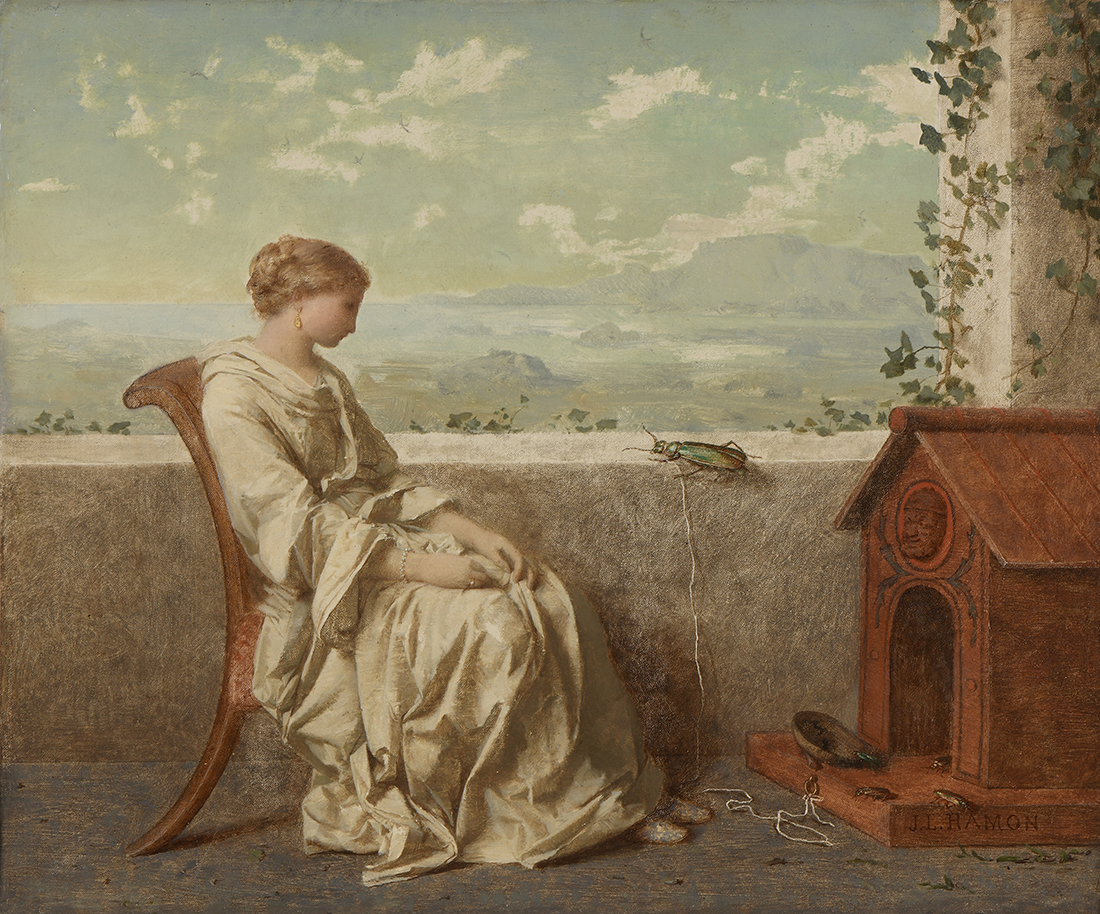
Jean-Louis HAMON (1821-1874)
Cantharide esclave
Oil on paper mounted on canvas, signed lower right.
Restorations on the edges.
40 x 47 cm
Exhibition:
- Salon des artistes vivants of 1857, n°1297
Estimate: €1,000/2,000
Tableaux, dessins des XVIIIe et XIXe siècles provenant de la succession d'un collectionneur.
Œuvres de Gérôme, Sérusier, Mucha, Lacoste, de Feure, Devambez, Abbema, Osbert, Desvallières, Stevens, Desgoffes, Frechon, etc
EXPOSITIONS :
Mercredi 29 Mai -11h à 18h
Jeudi 30 Mai - 11h à 20h
Vendredi 31 Mai - 11h à 12h
VENTE :
Vendredi 31 Mai - 14h
CONTACT :
Romain Nouel
L’histoire de cette collection nous est inconnue. Pour nous, elle commence par une découverte fortuite, au gré d’un banal rendez-vous d’inventaire de succession ; celle
d’un homme dont nous ne savons rien hormis qu’il fut à un moment de sa vie antiquaire.
Dans le quartier de la Porte Dauphine, cet appartement au désordre opacifiant nous a dévoilé peu à peu son contenu en nous révélant ce que nous recherchons tous :
l’abondance et le goût. Ici s’accumulait, parfois anarchiquement, près de 800 tableaux et quelques 20 000 feuilles (dessins, estampes, photos).
De cette collection nulle part cartographiée, de ce collectionneur inconnu des principaux experts, nous ignorons presque tout. Se dessine à la lumière de cet amoncellement
le caractère d’un homme solitaire, féru d’histoire de l’art, inlassable défenseur de l’Artiste, qu’il soit peintre, dessinateur, sculpteur ou photographe. Nous aimerions
comprendre, en savoir plus, interpréter ce qui poussait cet homme à accumuler, souvent sans les exposer, tant et tant de tableaux et dessins. Nous ne pouvons faire
que des suppositions.
La dispersion de cette collection sur près de sept ventes est le reflet de cette quête et de ce mystère. Elles nous livrent, en ombres chinoises, les traits de cet homme
passionné d’art et de découvertes. Elle nous révèle aussi que cette agrégation, quête d’une vie, ne fut pas vaine : l’ensemble de sa collection aujourd’hui révélée sera ven-
due au profit de l’Institut Pasteur.

Jean-Léon Gérôme (Vesoul, 1824 - Paris, 1904)
L'épave
Toile
70,4 x 106,3 cm
Exposition : Cercle de l'Union artistique, 5 rue Boissy d'Anglas, n°44 (appartient à l'auteur)
Bibliographie : Arsène Alexandre, article dans Le Figaro, rubrique, la vie artistique, lundi 4 février 1901 : "On peut
assimiler à un paysage la marine avec une barque de naufragés qu'expose M. Gérôme. Il y a quelque analogie,
pour le sujet, mais différence entre autres choses pour la mise en toile avec le chef-d'?uvre si émouvant de
Delacroix au musée du Louvre."
Estimation : 80 000/120 000 €

Alfonse MUCHA (1860-1939)
Lamalou-les-Bains, Hommage au docteur Charcot, 1903
Encre, lavis et crayon signé et daté en bas à gauche
55,5 x 25 cm

Georges de FEURE (1868-1943)
Paysage, 92
Gouache
66,5 x 65 cm
Estimation : 6 000/8 000 €

Paul SERUSIER (1864-1927)
Ile de la douane, entrée du Trieux
Fusain et crayons portant le timbre de l’atelier
15 x 23 cm
Estimation : 5 000/6 000 €

George DESVALLIERES (1861-1950)
Résurrection des morts vers 1946
Détrempe sur toile signée en bas à droite
175 x 84 cm
Bibliographie :
- « George Desvallières, Catalogue raisonné de l’œuvre complet CR 1447- 2675 » Catherine Ambroselli de Bayser,
Somogy édition d’art, Paris, 2015, reproduit et décrit sous le n°2535, P. 670
Estimation : 4 000/5 000 €

Alphonse OSBERT (1857-1939)
Jeune bergère, le soir, 1935
Huile sur panneau signé en bas à droite, titré, daté, contresigné et porte un n° 1137 au dos
21 x 28 cm
Estimation : 2 000/3 000 €

Jean-Louis HAMON (1821-1874)
Cantharide esclave
Huile sur papier marouflé sur toile signé en bas à droite.
Restaurations sur les bords.
40 x 47 cm
Exposition :
- Salon des artistes vivants de 1857, n°1297
Estimation : 1 000/2 000 €
Exhibition of lots
Change delivery address
You may use the carrier of your choice.
The indicated price does not include the price of the lot or the auction house's fees.